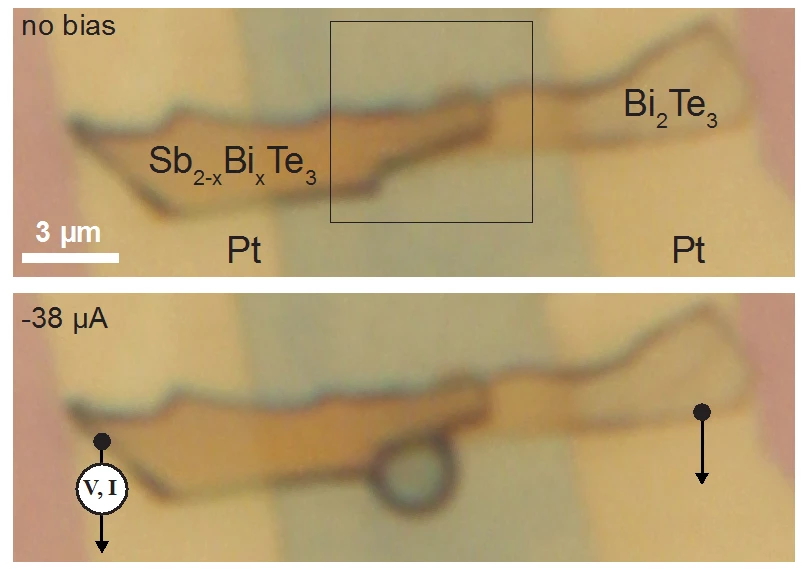By putting a new spin on decades-old thermoelectric technology, scientists at the University of California, Los Angeles (UCLA) have developed a tiny microscopic cooling device they describe as the "world’s smallest refrigerator." It’s hardly the place to keep leftovers from spoiling or your beers cold on a summer’s day, but the team hopes this nanoscale device can act as a springboard for advanced systems that cool things almost instantaneously.
Thermoelectric devices consist of a pair of semiconductors placed between metalized plates and work by harnessing a temperature differential between the two sides to produce electricity. NASA’s Voyager spacecraft use this principal to power their scientific instruments, which rely on thermoelectric devices applied to heat-generating plutonium as their power source.
In pursuit of more everyday applications, scientists are experimenting with the technology in hope of developing wristbands that power smartwatches, cooking pots that power smartphones and thermoelectric paint that generates electricity from almost any heat source.
The authors of the new study are trying to leverage the thermoelectric principle in a slightly different way. Aside from generating electricity, these devices can also work in reverse. As an electrical current is applied to the device it turns one side hot and the other side cold, which enables it to work as a thermoelectric cooler.
The tiny cooler developed by the UCLA team involves two semi-conductor materials called bismuth telluride and antimony-bismuth telluride. By applying regular Scotch tape to the materials and then peeling it back, the scientists were able to procure single-crystal flakes which they used to build thermoelectric devices just 100 nanometers thick, or around one ten-millionth of a meter.

“We beat the record for the world’s smallest thermoelectric cooler by a factor of more than ten thousand,” says Xin Yi Ling, one of the paper’s authors and a former undergraduate student in Regan’s research group.
But the tiny "refrigerator" is much more than a gimmick. Some of the advantages of thermoelectric cooling devices include their reliability, due to a lack of moving parts, and their compact size. However, they don’t currently generate enough electricity and keep things cold enough to be used at larger scales.
By studying the phenomenon on a nanoscale, the scientists hope to better understand the physics at play, and then apply those lessons to the development of larger devices. One trick they will be looking to borrow from their tiny fridge is its unique ability to produce a cooling effect almost instantaneously.
“Its small size makes it millions of times faster than a fridge that has a volume of a millimeter cubed, and that would be already be millions of times faster than the fridge you have in your kitchen,” says UCLA physics professor Chris Regan, who led the research team. “Once we understand how thermoelectric coolers work at the atomic and near-atomic level, we can scale up to the macroscale, where the big payoff is.”
The research was published in the journal ACS Nano.
Source: UCLA




